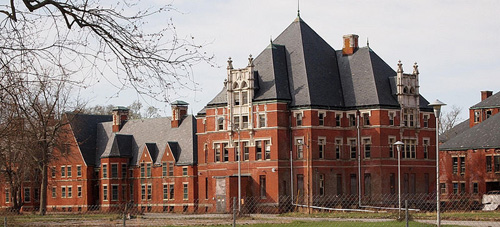
Now that all of the innocent victims have been sadly laid to rest, it’s time for me to weigh in on the Newtown shooting.
Before I launch into what may be an unpopular perspective on this tragedy, I say a quiet prayer for those whose lives were cut short, especially all the young children who weren’t even old enough to experience hostility, or to hold a grudge, or to feel the need to seek revenge for some perceived wrong. And I say a quiet prayer for all their innocent counterparts in other parts of the world, far removed from the suburbs of Connecticut. The children of Syria, caught up in a civil war; the Palestinian and Israeli children, the children of Mali, of Kenya and Darfur, of Pakistan and Afghanistan, Somalia and Iraq, caught in the crossfire of conflicts not of their making. The children in the inner cities of Boston, New York, Chicago, Detroit, Los Angeles… caught in the crossfire of gang violence, living in the parallel life of the ghetto in America’s third world. For in my heart, there is no distinction between American children and Muslim children and Israeli children and Palestinian children and African children. They are all children. Our children. The future of our species. All of them.
And here is where I probably part company with most of you out there. Adam Lanza is one of our children, too. He is not, as Dr. Drew continually referred to him on his program analyzing the malformed brains of would-be killers, “a monster.” He is our child, a product of our collective puttering around on this planet. We conceived him, we brought him into the world, we raised and nurtured him. Or we failed to nurture him. But he is ours. Just as all those innocent victim children are ours. No different. I’ll say that again: no different. But he was different, wasn’t he? Instead of satiating those angsty years with morbid fatalism, bloody and violent video games, death metal music, recreational drugs and too much alcohol, he instead killed his mother and shot up an elementary school. At age 20, he was about to take that first uncertain step into adulthood, poised in that curious place of being old enough to fight in a war and (legally) kill people, but not old enough to purchase a beer in a bar.
I’m at an age where Adam, in another timeline, might have been my son. What if he was my son, and I was now trying to make sense of this seemingly senseless act? Was it something I did, or failed to do, that brought this troubled young man to the brink of uncontrollable madness, teetering on the edge of that fine line, and then pushed him over?
Adam Lanza’s mother, Nancy Lanza, was a member of the doomsday preppers. It was not the misinterpreted Mayan calendar cycle that these people feared. It is the looming fiscal cliff. They believe that an economic crisis will hurl this country into lawless anarchy. Nancy, along with who knows how many others, was stockpiling not only guns, but food, in fear of a future world not unlike Cormack McCarthy’s The Road. As part of her preparations, she took her son to firing ranges for target practice. Neighbors who described her as friendly and personable also said that they had never been inside her home, and didn’t really know much about her son. But we’ve heard many stories of survivalist groups, of doomsday cults, of militias who don’t trust the government or the police and take the protection of their families into their own hands. While it might not have been the greatest idea for Nancy Lanza to take her troubled son Adam to a shooting range and put a gun in his hand to help instill confidence, it wasn’t just that. There must be some switch that gets flipped, a circuit that gets tripped somehow. Can it simply be a matter of brain chemistry or a malformed frontal lobe that turns unhappiness into violence?
I live with varying degrees of depression. I’ve had anxiety attacks. Sometimes I get so angry at society’s hypocrisy, the vast divide between rich and poor, the pathetic state of things, the world war inside my head and my helpless inability to scratch my way out, that just for a moment, I think about shooting up something. Or when some enormous SUV rudely cuts in front of me, I’ll fantasize a rocket launcher on the front of my ’93 Corolla. Will I snap someday and suddenly want to kill people? Probably not. But who’s to say? What level of fear, anger, confusion, hostility or frustration provides the necessary ingredients for an outward display of blind aggression? Dr. Drew’s guest maintained that there is a certain brain formation that predisposes a person to not feel compassion for others. Since I feel remorse when I kill insects, and the mice I’ve trapped inside my home are set free on a nearby hillside, my frontal lobe is probably intact. But if that’s true, then maybe this is something we can see in utero, and then choose to abort and not take the risk. Or we can fix it somehow with stem cells. Is this the direction we will one day take to deal with mentally disturbed people? In the wake of one more tragedy, one more wake-up call, how will the medical community, the larger community, respond?
Clearly, Adam was disturbed, distraught, unbalanced. It will probably be found that in addition to Asperger’s syndrome, he had some sort of mental illness, even if it was just ‘run of the mill’ depression that got set off somehow. And this is where I pick up my flag for mental illness and hoist it proudly in the air.
The mentally ill are the lepers of the modern world. They are feared, scorned and romanticized; placed in a separate category from other diseases. Mental illness is not a disease like cancer. We respect cancer; we hold it in reverence. Cancer sufferers are beneficiaries of our deepest compassion and understanding, the finest hospitals, the best treatment and post-treatment support groups available (yes, of course, if you have decent health care coverage or can afford it). There is research underway to discover even better drugs and more effective cancer treatments. But even beyond the resources—or perhaps at the core of the resources—is the support and encouragement of the civilized world.
Mental illness is different. Due to budget cuts, state psychiatric hospitals have gone through massive waves of closures. In the case of many institutions, with all the reports of under-staffing, mistreatment and abuse, over-medicating and countless other problems, it was probably a good thing. But what has been the alternative? For some states, the closures have involved transferring patients (including potentially dangerous ones) into community treatment programs, requiring the person to live at home or in a group facility. For others, like Florida, the mentally ill have ended up on the streets. It varies widely from state to state, but in most places, services for people suffering from mental illness do not exist, even for those who can pay for it.

One of Connecticut’s mental health facility closures, back in 1996, the oft-maligned Norwich State Hospital (to which I say “good riddance”). But what now?
In the wake of Newtown, more and more stories are surfacing from desperate parents who are afraid of their children. It is not that they don’t see the warning signs—they are simply at a loss of what to do about them. For caretakers of mentally ill family members, very often their only course of action, when a situation dangerously escalates, is to call in law enforcement. According to Mental Health Policy Org., there are currently more mentally ill in prisons than in hospitals. What’s more, if the state (like Connecticut) doesn’t have an “assisted outpatient treatment” law, you cannot force a mentally ill person into treatment, even if they pose a risk to themselves or others. The only way you can institutionalize someone is after they’ve already done something. And even when a person in a crisis is brought to a hospital, the average length of stay is a few days. They are then released back into the family’s care. There is no follow-up, no outpatient treatment, and no one ensuring that medication is being taken.
Families of mentally ill loved ones are typically on their own, with few resources and fewer ideas of what the hell to do. My mom is one of the lucky ones. She is far too frail and too loving to be a danger to anyone. She is supremely fortunate to have my deeply exhausted father and a few caring assistants to look after her at home. It would be far easier on my dad if he could bring her to a place where they know how to properly take care of someone in her mental state, but there isn’t any facility like that. At least, not one that he trusts. He has compelling reasons not to. With overworked, underpaid staff and limited resources, it’s far easier to heavily sedate someone than it is to ride the roller coaster. Our health facilities are ill equipped to handle the mentally ill, and we’re socially ill equipped as well. I’ve noticed that the stigma and discomfort around mental illness runs deep. It shows itself in well-meaning but skittish relatives who keep personal contact to a bare minimum, at a complete loss over how to act and what to say.
Something needs to be done to bring this out of the shadows and improve mental health care in this country. It cannot be left up to individual states; that much is clear. Think of mental illness as the invisible cancer—the one illness in this world that can, at any moment, reach out and claim additional victims beyond its host. It is a mysterious disease, even more so than all the others. The human brain is murky, dark, ominous and unknowable. But just because we don’t completely understand something does not mean we should fear it, dismiss it, ignore or abandon it.
In the months to come, experts and amateurs will be thinking about Adam Lanza, analyzing him, picking apart the pieces of his life and the parts of his brain, trying to figure out why he did it. There will be op-eds and scientific papers, letters and opinion pieces and maybe even a TV movie. He’s a clinical study now, a social deviant, a curiosity, a historical figure, a tragic hero for all the angry and misunderstood people in this world, of which there are many. MANY. All those ticking time bombs out there, those slowly developing “monsters,” desperate to be noticed, to be attended to—hell, just to be acknowledged. In all the hubbub of this planet (which is rapidly coming unhitched from its axis), in all the madness and endless, useless distractions, there are quiet little screams going unheard. That is, until they become howling, shrieking wails. Then we hear them. Adam was tired of being ignored, marginalized, misunderstood. He was maybe afraid of being sent away to a mental institution, which reportedly his mother was trying to do (though Connecticut’s laws would have made this close to impossible). Whatever it was, he wasn’t being heard. We hear him now.
We can ban assault weapons. We can ban all weapons. We can arm teachers, students, janitors, and bring state militias into every school in America. But nothing will change until we put our collective arms around every Adam Lanza in the world, every lost soul, and care for them, nurture them, as we would our own children. Because they are.
share this:
Leave a Reply